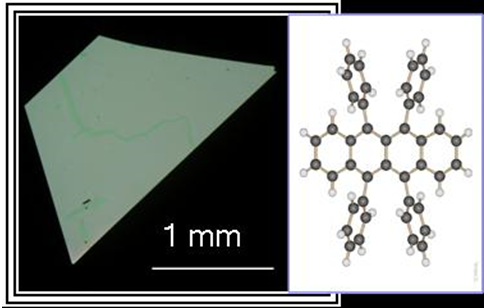Laboratory simulation of space weathering of nano-aggregates of polycyclic aromatic hydrocarbons dispersed in the water environment
- University of Milano Bicocca, Dep. Earth and Environmental Sciences, Milan, Italy (marcello.campione@unimib.it)
Polycyclic aromatic hydrocarbons (PAH) are ubiquitous organic molecules populating the interstellar medium of galaxies and they are the major responsible of interstellar infrared spectral features (e.g., Allamandola et al. 1989, Tielens 2008). PAH are also found as constituents in carbonaceous chondrites (e.g., Kalpana et al. 2021). Similarly to silicate dust, carbon-rich micrometric and submicrometric aggregates occur in different astrophysical environments where they are subjected to several weathering processes such as impact shock events and grain-grain collisions. These processes change the chemistry and structure of the original materials giving rise to new chemical species which contribute to the chemical richness of the cosmic environment (e.g., Murri et al. 2022; Mimura et al. 1995). The study of the chemical and structural evolution of aggregates of PAH subjected to extreme conditions is relevant for examine in depth the origin of the densest phases of carbon (e.g., pre-solar grains) as that of prebiotic building blocks of life (Giese et al. 2022). For this purpose, a lot of effort has been made by the whole scientific community for reproducing in laboratory the planetary conditions which trigger the processing of cosmic dust. In this framework, high-energy pulsed lasers represent consolidated tools for reproducing the high energy-density conditions similar to those occurring in shock events in the interstellar medium as a consequence of supernova explosions. Liquid-phase pulsed laser ablation (LP-PLA) is a technique in which high-energy laser pulses are focused on the surface of a solid target immersed in a liquid to induce ablation of material as a result of the ignition of a plasma plume, and recondensation of the ablated material in the surrounding liquid in the form of suspended nanoparticles. The presence of the liquid augments to a great extent the pressure achieved at the solid/liquid interface and allows the onset of cooling rates of the order of 105 K s-1, likewise to what occurs in circumstellar environments. Using this technique, nanodiamonds are commonly produced from graphite targets in water or organic liquids (e.g., Amans et al., 2017).
In this paper we report the results of the high-energy laser processing of a pure nano-phase of rubrene (5,6,11,12-tetraphenyltetracene), a PAH constituted by a backbone of four fused benzene rings (tetracene) bonded to four phenyl rings (Figure 1). The choice of rubrene is motivated by the possibility to obtain commercially available batches of purity higher than 99.9%, its ability to organize in a high-symmetry molecular crystalline phase, and the in-depth knowledge of the photophysical and photochemical properties of both the isolated molecule and molecular aggregates. All these characteristics make rubrene an ideal model system to study the evolution of PAH in response to high-energy processing. We performed LP-PLA of rubrene nano-phases dispersed in water (i) to simulate space weathering in a water environment (e.g., hydrous or volatile-rich bodies) and (ii) to study its chemical and structural evolution. The laser processing of the water suspension was monitored by optical spectroscopy (absorption and luminescence) and high-resolution transmission electron microscopy and diffraction analyses.

Figure 1. Molecular structure of rubrene (C42H28) and optical micrograph collected with cross polarizers on a thin orthorhombic single crystal or rubrene.
We observed that laser processing brings about a progressive suppression of the absorption band in the visible range of the pristine rubrene nanocrystals, with increment of the signal in the UV range, indicating their transformation into a different phases. The structural and chemical features of these new phases are inferred by high-resolution transmission electron microscopy and analysis and compared with known carbon-rich phases populating the interstellar medium.
Acknowledgments
Funding of the University of Milano – Bicocca through grant 2021-ATEQC-0054 is acknowledged. We are grateful for the support of Giancarlo Capitani for electron microscopy analyses.
References
Allamandola et al. (1989), The Astrophysical Journal Supplement Series 71, 733−775.
Amans et al. (2017), Journal of Colloid and Interface Science 489, 114–125.
Giese et al. (2022), ACS Earth Space Chemistry 6, 468−481.
Kalpana et al. (2021), Planetary and Space Science 198, 105177.
Mimura et al. (1995), Geochimica et Cosmochimica Acta 59, 579−591.
Murri et al. (2022), ACS Earth and Space Chemistry 6, 197−206.
Tielens (2008), Annu. Rev. Astron. Astrophys. 46, 289–337.
How to cite: Campione, M. and Murri, M.: Laboratory simulation of space weathering of nano-aggregates of polycyclic aromatic hydrocarbons dispersed in the water environment, Europlanet Science Congress 2022, Granada, Spain, 18–23 Sep 2022, EPSC2022-801, https://doi.org/10.5194/epsc2022-801, 2022.

